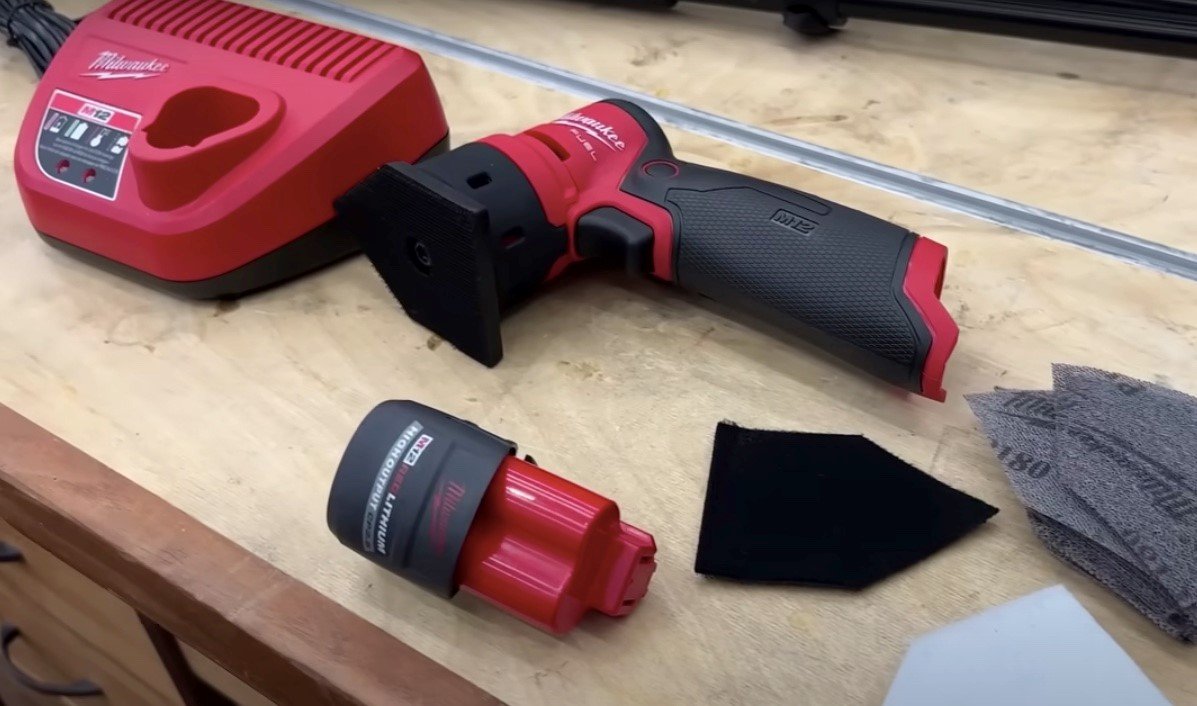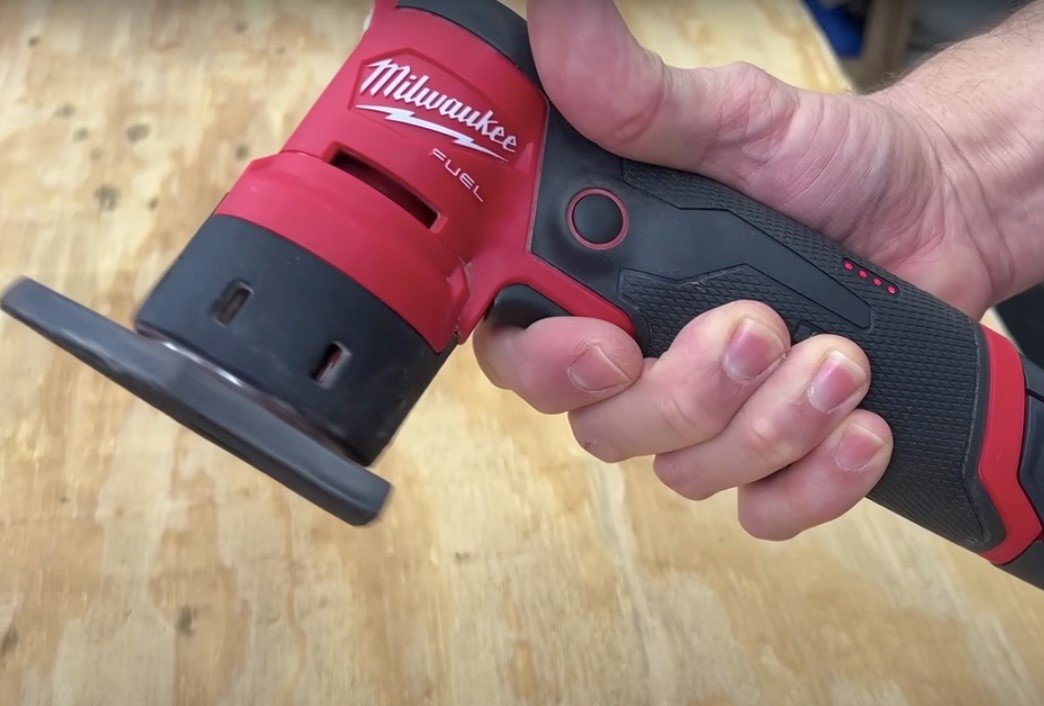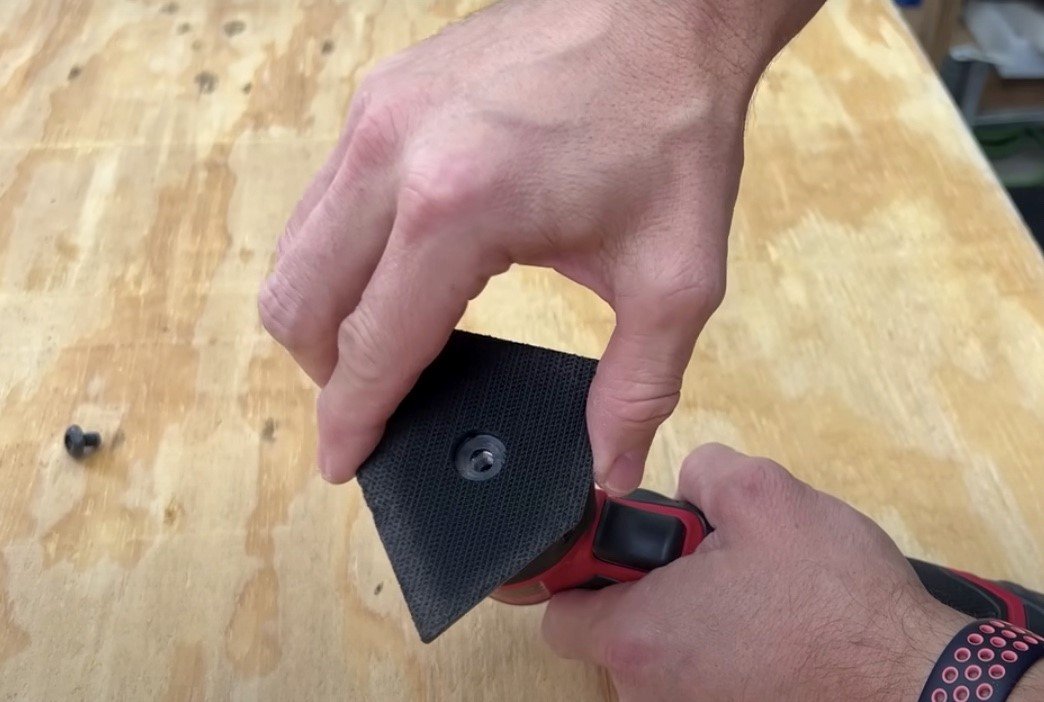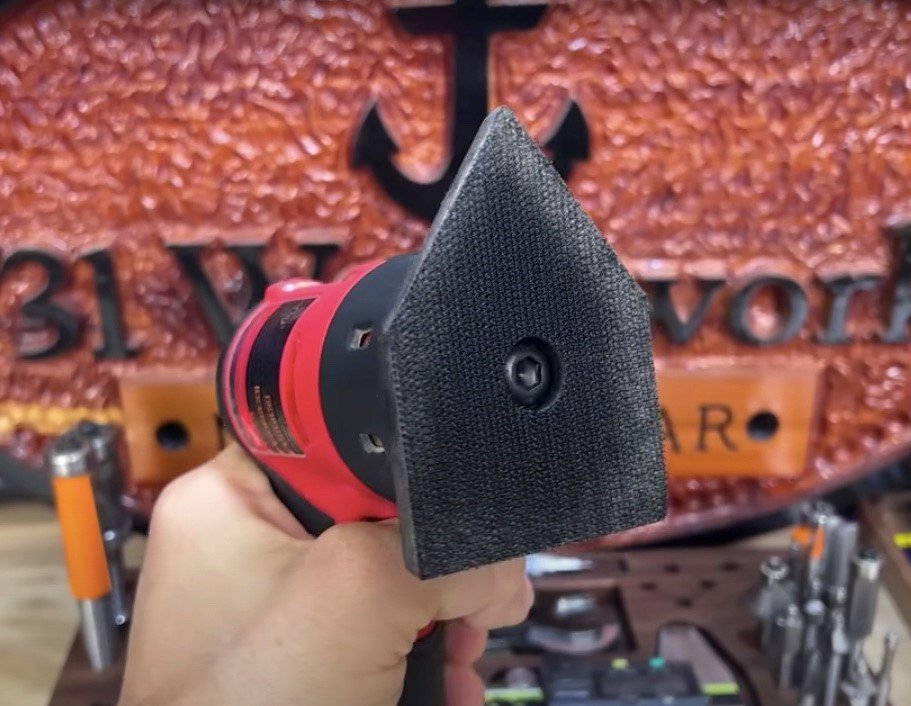Milwaukee M12 Orbital Detail Sander Review
The new Milwaukee M12 Fuel Detail Sander is one of the best tools I’ve added to my shop recently. It’s such an awesome sander, it’s almost a necessity. I’ll tell you why you should get it, even if you don’t have M12 batteries.
Affiliate links are used on this website to help support this website. For more information, read our affiliate disclaimer.
Buy M12 Detail Sander Kit from Ohio Power Tool here: https://shrsl.com/3ygwo
Buy M12 Detail Sander Kit (Home Depot) here: https://homedepot.sjv.io/yR0Zn3
Detail Sandpaper and Accessories here: https://shrsl.com/3ygws
Most of us have our orbital sanders for larger projects. This is by far one of my most used tools over the last several months. I’m using this almost every time I’m in the shop because it is so handy.
A few weeks ago, you saw me use the Rikon 2” spinning sander, so why would you want this one. Well, it has a nice point on it that lets you get in corners much, much better, and that’s where this one really shines.
This is the M12 platform, so if you already have the M12 batteries you’re in luck. You can just buy the tool. If you do get one with a battery, which I recommend, you’re going to get a charger, a soft interface pad, a pad saver (more on that later), and few extras sanding discs, so it’s the better value. Unless I’m mistaken, the full kit comes with 80-, 120-, and 180-grit paper. If you don’t want to buy extra pads, you can just cut your own from the pads you already have using a razor.
The battery gauge is on the side to quickly let you know how much battery life is left. The 2.5-amp battery that comes with this will last a very long time. I use this quite a bit and I don’t have to charge it very much at all. If you do want more battery life, you could always pick up a 4.0-amp battery. I actually like the larger battery only because it allows the sander to sit upright. That’s just a personal thing. It doesn’t make it work any better.
This is a variable speed sander at the trigger. The more you pull on the trigger, the more you increase the orbits of the head. You can also lock that trigger in place with the button on the side. There are also some speed adjustments on the back, from 1 through 4, which limits just how fast you’re sanding. The range is from 4,000 to 14,000 orbits/minute. At 1 your speed is very low for delicate material. At 4 you’re going very fast for when you just need to power through material.
Another cool feature is that the pad on the bottom can rotate through 9 different positions. This allows you to set up any way you need in order to get into those tight corners. This is labeled as a detail sander, so you’re going to use this on delicate parts when you’re not trying to take off a bunch of material at a time.
That doesn’t mean it can’t. I used it to sand an old stool with old paint baked into it. It’s powerful enough that with the 80-grit sandpaper I used, it took that paint right off. One of the downsides is it doesn’t have dust collection on it, so if you’re worried about that, this may not be the tool for you. But on smaller projects you shouldn’t have to worry about that too much.
One of the things we make here at 731 are catch-all trays. We sell them on our store in different shapes and sizes. This is where this tool really shines. I’m able to get down to sand inside the pockets, especially up into tight corners. Even with the Rikon 2” sander, it was limited to where it could get on those corners. The only other option was hand sanding, and I hate hand sanding.
It's also very well balanced and the vibration is near zero unless you have it on full speed. I usually use it on a 2, and it has minimal vibration. The tool has a 5-year warranty, and the battery has a 3-year warranty.
So what are the Cons of this. Well, first is the price. A lot of people will be deterred by the price - $179 currently at Home Depot for the sander, battery, charger, and bag – but if they gave it a chance, they would see just how much they really would use this.
The second drawback is both a Pro and a Con, which is the unique shape of the sanding disc. It’s basically the shape of a Homeplate – Go Yankees. That unique shape, though, is what lets you get into those tight corners. As with most mesh sanding discs, they do last quite a long time, though. Milwaukee’s pads are similar to other mesh sanding pads you’ve seen.
There are two pads that come with this kit, the pad saver and the interface, or sponge pad. The pad saver is meant to save this main backer pad, which is harder to replace. Each pack of Milwaukee’s mesh sanding pads comes with a new pad saver. The hook and loop will then wear out on the pad saver, not the main pad, and you can swap them out as they wear out.
My favorite pad is the soft interface pad. These are very nice to have when you’re sanding on corners, roundovers, molding, or anything like that. Once I use the router to roundover those edges, this interface pad is perfect for sanding those to make sure they’re perfectly smooth without damaging the roundover. Table tops, cutting boards, anything you’ve put a roundover on that you don’t want to damage, this is the tool.
Both pads have regular hook and loop back, so they stick to the main pad with ease. If you do pick one of these up, I highly recommend go ahead and get a second contour sponge. Over time they crack and wear out, it’s just the nature of the beast. If it tears up while you’re working, you’re going to want to have that extra on-hand.
The third drawback, in my opinion, is no dust collection. I don’t know how they would add it on without changing the size of the tool. Since this is such a small sander meant for smaller projects or detail projects, I don’t think sanding dust is the issue it would be with a full-size sander on larger projects. When I’m sanding the catch-all trays it does create a little bit of dust, but it’s easily just dumped or vacuumed out.
So why would you want one of these if you own an oscillating tool or are planning to get one? For one reason, the vibration is a night-and-day difference. You just have to feel it to see what I mean. Also, the oscillating tool doesn’t orbit, it only moves the head side to side. That side-to-side movement will scratch your wood. The Milwaukee has a 1.5 mm orbit around the head. Basically, you’re looking at the Mr. Miyagi of sanders. And compared to the oscillating tools, Mr. Miyagi’s quieter. This is also the tool I grab when the job is something small, like when a piece of wood just has a burn mark on it.
I can hear you saying it. “I’m not buying this because I don’t have any Milwaukee tools, and I don’t want to get into another battery platform.” If you want this tool, you can buy the kit, and you’ll be perfectly happy. It doesn’t mean you have to go out and start buying all these Milwaukee tools. You can also keep an eye on our tool deals - https://www.731woodworks.com/tool-deals - and you can often pick up extra batteries for this at a good deal, just for spares.
One of my favorite verses in the Bible is Isaiah 6:8. It says, “And I hear the voice of the Lord, saying: ‘Whom shall I send, And who will go for Us?’ Then I said, ‘Here am I. Send me.” More of us need to be saying, “Here am I.”
Watch the full video review of this Milwaukee Orbital Detail Sander - https://youtu.be/7iddgjytggA
Related Articles:
Never Seen a Sander Like This Before!
Benchtop Sander Every Woodworker Needs for Small Parts








